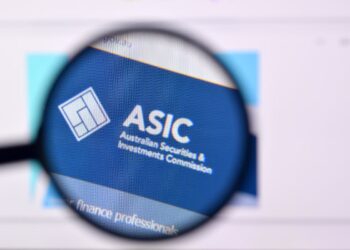When a fund manager defines its investment philosophy as ‘growth’ or ‘value’, ‘GARP’ or ‘style neutral’ it only perpetuates the myth that such distinctions not only exist, but are also founded on some ancient academic bedrock.
At best, the traditional answers are a marketing message and at worst show an entrenched lack of understanding of the elements of successful ‘investing’ (as distinct from speculating or index tracking).
A large proportion of investors mistakenly believe that investing for growth is the antithesis of investing for value and that the factors a typical value investor will look for in an investment may be different from those that a growth investor will look for.
Early empirical studies created the distinction and newer studies simply and erroneously confirm the two schools indeed exist. But like the ‘Emperor’s new clothes’, not everything that can be imagined actually exists.
In an article published in theAustralian Financial Review(July 24, 2003) headlined, ‘Money flows back into stock funds’, the author wrote: “Managers of value funds look for stocks that are considered cheap based on price-to-earnings ratio and price-to-book ratio…Managers of growth funds invest in companies that are experiencing rapid revenue and earnings growth.”
First, it is important to note that book value, P/E ratios and the like have little if anything to do with value. If book value was the guide to value, a company would be worth more simply by purchasing more assets regardless of the productivity of those assets. A company might engage in folly and buy a machine that manufactures vinyl records or it might buy a steam engine and thereby increase its book value (and be ‘earnings accretive’) and according to the above statement, render the company more valuable.
Next, value and growth are not opposing investment styles that really exist.
As Charlie Munger of Berkshire Hathaway once said: “The whole concept of dividing it up into value and growth strikes me as ‘twaddle’. It’s convenient for a bunch of pension fund consultants to get fees prattling about a way for one adviser to distinguish himself from another. But, to me, all intelligent investing is value investing.”
If share market investing is about identifying wonderful businesses and purchasing those businesses at prices likely to produce an above average rate of return, the inputs required include expected future sales growth, profit margins and return on equity. Growth therefore becomes a component of determining value.
The same inputs are required and outputs produced whether the company is accepted as a ‘value’ stock like West Australian News (WAN) today or a ‘growth’ stock like Cochlear.
According to the tables, Company ‘A’ in Table 1 would be the growth stock. The dividend yield is less than 1 per cent and the price earnings ratio is 42 times earnings. Company ‘B’, with a dividend yield of 8 per cent and a P/E ratio of 10 would be labelled the ‘value’ stock.
If we make an assumption that we know exactly what the growth of retained earnings and dividends will be over the next four decades, we discover that purchasing shares in company ‘A’ will produce the higher return. The higher return indicates the buyer of shares in the ‘growth’ stock received better ‘value’.
Dividend yield and price earnings ratios therefore have very little if anything to do with determining value. Company ‘A’ represented better value even though it had a lower dividend yield and higher price earnings ratio. Value is presented by the return that is received by the investor. The higher the return received, the better the ‘value’ at the time of purchase.
In an attempt to clear up the confusion regarding the growth and value dichotomy, Warren Buffett wrote in the 1992 Berkshire Hathaway Letter to Shareholders: “The two approaches are joined at the hip: growth is always a component in the calculation of value, constituting a variable whose importance can range from negligible to enormous and whose impact can be negative as well as positive.”
A company can therefore represent good value even if a high price-to-book ratio, high price-earnings ratio, and/or a low dividend yield exist.
Table 2 helps to explain — suppose a company with $5 of equity per share is able to generate returns on incremental capital of 20 per cent.
The company’s earnings per share would equal $1. If the dollar was retained in the business and the company in the second year was again able to generate a return on equity of 20 per cent, this would equate to 20 per cent growth in earnings, which if multiplied by a constant price earnings ratio of 10 produces $2 of additional market value. The $1 retained has created $2 of market value.
Table 3, however, reveals the impact on market value for a company generating a low return on equity of 5 per cent.
In this example, the company has again generated $1 of profits that will be retained. Because the return on equity is only 5 per cent, the equity we are required to enter for illustration purposes to generate $1 of earnings is $20. The additional dollar retained, however, has generated only 50 cents of market value. In other words, the ‘growth’ has had a negative impact to the tune of 50 per cent.
For every dollar retained by the company in Table 3, shareholders will lose 50 cents. Businesses able to generate only low rates of return on equity should not ‘grow’ but instead return profits to shareholders by way of dividends. Unfortunately, even though many companies are advised by corporate finance departments to do just that, they ignore the advice, instead retaining profits and seeking to inflate their own egos as they inflate the size of the business.
And as Buffett also notes: “Irrespective of whether the business grows or doesn’t, displays volatility or smoothness in its earnings, or carries a high price or low in relation to its current earnings and book value, the investment shown by the discounted-flows-of-cash calculation to be the cheapest is the one the investor should purchase.”
Even a ‘growth’ manager should keep one eye on the price — if he doesn’t, then such individuals are merely ‘momentum speculators’ playing the greater fool principle: buy at any price because a greater fool will pay more for it tomorrow. This, however, would not be called investing but ‘gambling’ that there is someone else who will, indeed, pay more.
Successful investing requires an understanding that growth contributes to value and recognising that value and growth are two sides of the same coin, will provide a quantum leap in the potential for long-term investing success.
In our ongoing efforts to invest successfully, we only select those opportunities that have both sound prospects for growth and are offered at an attractive price. This is not GARP or style-neutral investing — labels that imply some active thought as to whether a company fits some portfolio-defining criteria.
Remember, all you need is the ability to identify a company’s growth potential — it can be strong or flat — and the ability to wait until that company is cheap based on that potential. Fortunately many investors are coming to realise the merit in the above approach but unfortunately the focus now is on the word ‘cheap’ — trying to determine the exact price that should be paid for a share.
As our example showed earlier, paying a price earnings multiple of 24 times earnings is still value investing if the ultimate rate of return is higher than that available elsewhere. Investing is most intelligent when it is most business-like, not when one doggedly adopts a mantra that is flawed to begin with.
There is no empirical or valuable difference between growth and value. Both are required and so when evaluating companies expected to generate high returns for clients, both should be used.
Roger Montgomery is managing director of Clime Asset Management.





